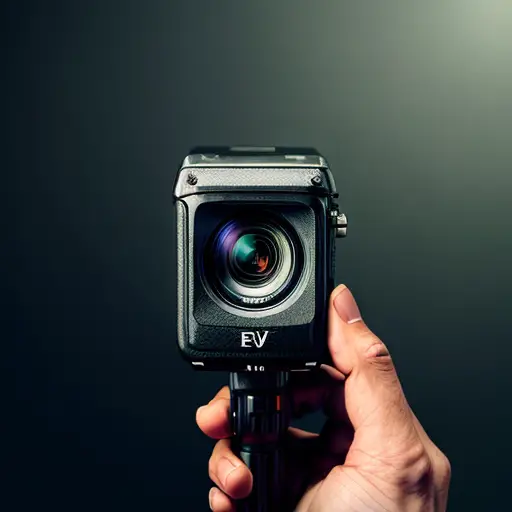Understanding EVF in Photography: An Introduction to Electronic Viewfinders
Ever wondered what those fancy acronyms in photography mean? Well, let's unravel the mystery of EVF together! Electronic Viewfinders, or EVFs for short, are like the high-tech goggles of the photography world. Instead of squinting through a tiny peephole, EVFs bring the image to life right before your eyes, like a magical portal into a parallel universe of pixels. Think of it as a mini TV screen nestled within your camera, giving you a sneak peek of what your final masterpiece will look like. No more guessing games or awkward angles; EVFs are here to save the day, making you feel like a superhero with X-ray vision. So, grab your camera and embrace the future of photography, where EVFs reign supreme and blurry shots become a thing of the past!
EVF stands for Electronic Viewfinder in photography. It is a feature found in some cameras that allows photographers to preview their shot through a digital display, rather than using a traditional optical viewfinder. One interesting fact about EVF is that it offers several advantages over optical viewfinders, such as the ability to display real-time exposure and white balance adjustments, simulate different shooting modes, and even show a live histogram. This technology has revolutionized the way photographers compose their shots, providing them with more accurate and customizable previews before capturing the image.
How EVF Works: Exploring the Technology Behind Electronic Viewfinders
Curious about the inner workings of those nifty EVFs? Let's dive into the fascinating world of technology! Picture this: a tiny, high-resolution display nestled within your camera, working tirelessly to bring your photographic vision to life. As you peer through the viewfinder, the EVF springs into action, capturing the scene in real-time and transforming it into a digital masterpiece. It's like having a mini computer inside your camera, processing light, colors, and details with lightning speed. With its ability to simulate exposure, white balance, and even depth of field, the EVF is like a virtual playground for photographers, allowing us to experiment and fine-tune our shots with ease. So, next time you're out capturing moments, take a moment to appreciate the marvels of EVF technology, and let it guide you towards photographic greatness!

Advantages of EVF: Why Photographers Are Embracing Electronic Viewfinders
Electronic Viewfinders, or EVFs, have taken the photography world by storm, and it's not hard to see why. These futuristic marvels offer a plethora of advantages that have photographers ditching their traditional optical viewfinders in favor of this cutting-edge technology. Firstly, EVFs provide a real-time preview of your shot, allowing you to see exactly how your image will turn out before you even press the shutter button. No more surprises or disappointments when reviewing your shots later; with EVFs, what you see is truly what you get.
Another major advantage of EVFs is their ability to display crucial shooting information right in the viewfinder. From exposure settings to histograms, focus peaking, and even gridlines, all the essential details are conveniently at your fingertips. This means less time fumbling with camera menus and more time focusing on capturing the perfect shot. EVFs also offer the flexibility to overlay additional information, such as electronic levels or customizable grids, making composition and alignment a breeze.
EVFs are not just practical; they also offer a creative playground for photographers. With the ability to simulate different shooting conditions, such as black and white or high contrast, EVFs allow you to experiment and visualize your artistic vision in real-time. This instant feedback empowers photographers to make quick adjustments and fine-tune their shots on the spot, resulting in more accurate and satisfying images.
Furthermore, EVFs excel in low-light situations, where optical viewfinders often struggle. By amplifying the available light, EVFs can brighten up the scene, making it easier to compose and focus accurately. Additionally, EVFs can display a live histogram, helping you maintain proper exposure even in challenging lighting conditions. Say goodbye to the guesswork and hello to perfectly exposed shots, even in the darkest of environments.
In conclusion, EVFs have revolutionized the way photographers capture and create images. With their real-time preview, convenient shooting information, creative possibilities, and low-light capabilities, it's no wonder photographers are embracing this technology with open arms. So, if you haven't experienced the wonders of EVFs yet, it's time to take the leap and unlock a whole new world of photographic possibilities.
EVF stands for Electronic Viewfinder in photography. It is a digital display that shows a real-time preview of the image through the camera's lens. Unlike traditional optical viewfinders, EVFs provide additional information such as exposure settings, histograms, and focus peaking, allowing photographers to make more informed decisions while composing their shots. So, with EVFs, photographers can see the world through a digital lens, making it a fun and innovative tool in modern photography.
EVF vs. Optical Viewfinders: Comparing the Pros and Cons of Both Systems
When it comes to choosing between EVFs and optical viewfinders, photographers find themselves at a crossroads. Optical viewfinders, with their simplicity and direct view of the scene, have been the go-to choice for many years. However, EVFs have emerged as a formidable contender, offering a host of advantages. Optical viewfinders provide a clear, unadulterated view of the subject, without any digital processing or lag. They also tend to have better battery life and are not affected by refresh rates or resolution limitations. On the other hand, EVFs offer real-time previews, shooting information overlays, and the ability to simulate different shooting conditions. They excel in low-light situations and provide a more accurate representation of the final image. Ultimately, the choice between EVFs and optical viewfinders boils down to personal preference and shooting style. Whether you prefer the simplicity and authenticity of optical viewfinders or the technological advancements and creative possibilities of EVFs, both systems have their merits in the ever-evolving world of photography.